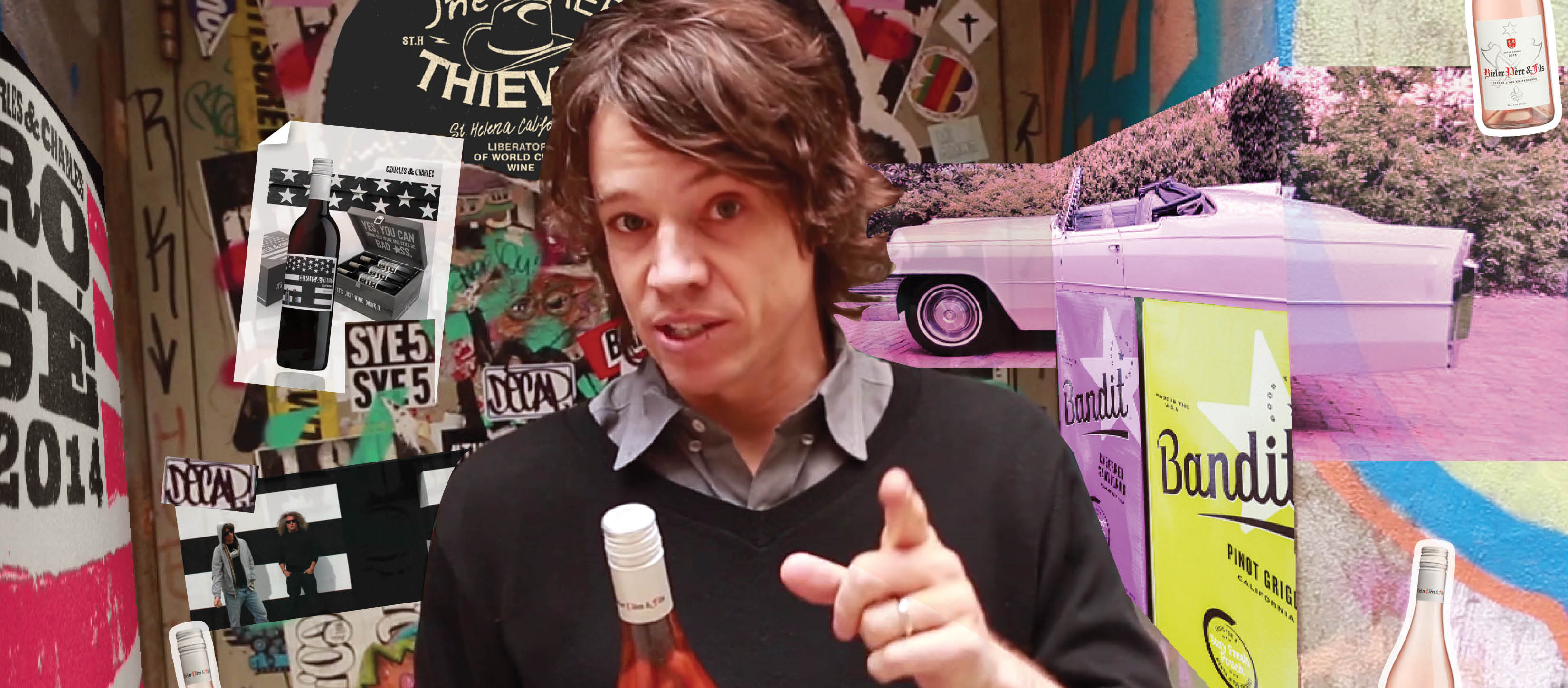
Charles Bieler is one of America's rosé pioneers. At a time when rosé was considered unfashionable, Bieler travelled the USA in a pink Cadillac to promote his family's brand Routas and beat the drum for rosé.
He currently has four separate partnerships with other winemakers, Charles and Charles with Washington winemaker Charles Smith, the Gotham Project in partnership with Bruce Schneider, Three Theives with Joel Gott and Roger Scommegna in addition to Bieler Père et Fils, a Coteaux d'Aix en Provence rosé made in partnership with his father.
Christopher Barnes: Charles, how did you get involved in wine?
Charles Bieler: I had no intention of getting into the wine business, none at all. It was kind of my dad's thing. I grew up transatlantic, born in London, lived in the New York area, lived in the Montreal area. I was interested in government and policy and I was a ski racer at the University of Colorado, trying to make the US ski team. I had spent a little time in the winery and in the vineyards, summer breaks and winter breaks, but the wine business was my dad's. I liked wine, but that was it.
He called me, I was entering my senior year at University of Colorado at Boulder and said, "Listen, kid. I've got all this wine we've been making." The winery is in Provence, in Coteaux Varois. The winery is called Routas, making lovely wines. For my dad, who had been in finance, this was a later in life, more hobby oriented endeavor, but he wanted it to be a proper business. It was making him crazy that it was as hard as it was to sell stuff. He had started the winery in '92. I guess he called me, what was it '99, for those next years it would just been building inventory more or less.
He said, Hey, listen kid. I just need one year of your life for you to come help me. I've never asked anything of you, this is true, and always supported me, which he had. He said, in another year you can do whatever you want, but I need somebody to help me figure out how to get rid of this stuff. You can sell it wherever you want.
The wines are good. Provence is rosé oriented, and at the time certainly I didn't know this. He knew it, he didn't tell me. In North America, where I was living, rosé hadn't been developed at all. Maybe in Soho or something, a few restaurants in San Francisco, Seattle, LA, there were a few restaurants selling it, but otherwise it didn't really exist.
When was this?
Late '98, going into '99. He said just help me out for a year, how do you say no to that? I was injured and making the US ski team was a reach. I had had some great results, but it was still a big commitment and I wasn't even confident that I would bridge to it. Timing was right, and so I launched in, with no real mentor, no know-how, and spent more time in the winery. The initial thing was really to try to go and build the business and being based here the target was what can we do in North America.
That's how I started. My soul hometown is Waterbury Center, Vermont. As I said, I moved around a lot, but that was the one place that was consistent, it's where my mom still is. Waterbury at that time was known just for one thing, now it's known for two things. Initially, these two guys named Ben and Jerry started a little ice cream company there, which for years was a local New England/Vermonty thing. They bought eventually an air stream trailer, painted it cow colors, and went around the country scooping out ice cream and made it a national brand. Then sold it to Unilever years later.
Here we were making lots of rosé, and were like, okay, they bought an air stream trailer, I can buy an old Cadillac and paint it pink. This is going to be my method to get people to talk about something that made no sense to most people. Actually, pink wine did make sense. It was thought of as a sweet thing for someone who wasn't sophisticated.
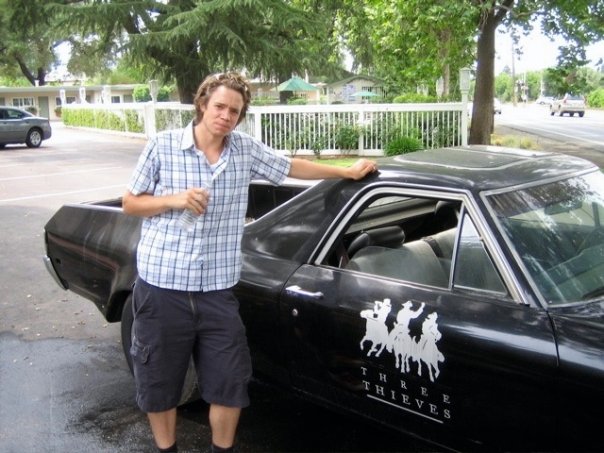
I more or less lived in this car for two years. After the first year, I had the option to get out, but by the end of that first year, after flailing for the first nine months with no distributor or infrastructure or anything, by the end of that first year, things were starting to click a little bit. You could see lights going on, and it was starting to be like, wow this wine thing's kind of neat. I started spending more time in the winery, and the production side was exciting. I started to feel like it snuck up on me. So that was the beginning. We built up the winery in 2005, my dad had an opportunity to sell it to a Scottish gentleman. That was never my dad's plan, to unload it, but it was a great offer and I had started another little wine project with two friends, Joel Gott and Roger Scommegna.
The project was called Three Thieves. We were putting out pure negociant California Zinfandel at the time, starting 2002 was the first, 2003 was when we released it, Zinfandel in one-liter jugs. We were making fun of the industry, the jug was the symbol of bad. We thought wouldn't it be fantastic to put something really interesting in it and sell these little jugs of Zinfandel at fine wine shops exclusively. We would not sell it to a chain or if it wasn't a quality wine shop. It was kind of a lark, and it sparked this whole enterprise for Joel, Roger, and me that has led to a lot of other amazing opportunities.
Your father's winery was right next to the Chateau which Angelina and Brad ...
In fact, if you really want to get into this, my dad went to Provence to buy Chateau Miraval. He saw an ad in the paper, he was sick, he had bronchitis and was trying to recuperate in Provence. Why not, right? If you're going to recuperate somewhere. Dry air. He saw this ad for this chateau and this 600 acres. No photos. The price seemed so reasonable for what they were describing, Roman ruins. At the time the only thing of value was there was a recording studio that the seller created - he was a French concert pianist. Everything else was falling down but there was a great little recording studio.
My dad went to see it and a century ago, it was incredible. Meanwhile everything was just crumbling and there were almost no vineyards. And he was like, if we're going to get a place in Provence there needs to be some vineyards. He was like, I'm going to do better, I'm going to buy some surrounding property which was for sale and had some vineyards and had a domain which had an old winery on it. Routas was a contiguous neighbor to Miraval. Another American bought Miraval, Tom Bove, a water engineer, incredible businessman. He has some of the water patents for Europe, as I understand, and he's been very successful and invested an enormous amount of money into reviving Miraval into what it became. He started leasing it to the Jolie-Pitts and they've done a lot with it. As a property it's incredible.
We think of Miraval as a rosé brand. Tom, the American who bought the property and revived it, his fascination was not rosé, it was not red, it was oddly white. Most of what he planted Miraval to was Vermentino. Historically as I know it, some of Miraval's most interesting wines were the Vermentinos.
That's interesting.
I don't even know if they make it anymore. I don't know what happened.
When you got into the wine business how did you connect with other wine people? You have a very laid back demeanor. How many pairs of Vans do you have?
I turned 40 last year and Joel Gott thought it would be really funny to give me 40 pairs of Vans. There were actually nine or 10 that were just hideous. I knew I would never wear them, so they went straight into the Goodwill. I have 31 pairs right now. The silly thing is, I have a couple pair that I don't like and I should probably be turning them over. Yeah, I got a lot of Vans.
I would imagine that's not a common thing in the wine business to own all these pairs of Vans.
I would say not common anywhere.
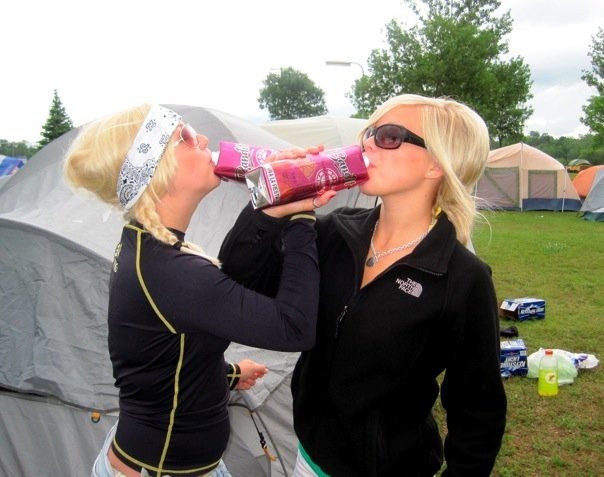
I guess my point is, how was it getting into this industry which has a bit of a snooty perception to it?
Very much so. I would say even more so in the late '90s early 2000s. The business has changed enormously since I started. It was very much sommeliers who were very formal. They wore ties and the service was more service traditional French orientation. Sommeliers today are showing tattoos and are far more knowledgeable than that old dude who was scolding you for not understanding Bordeaux, not that maybe even he did. There are tons of great women in the industry, and thank goodness. They have better palates than most men do, from what I've observed. The whole sommelier wine community has changed. In a younger, more inclusive way, which is so terrific.
How did you come across to these wine people?
People didn't know what to make of me. I was from outer space. First of all, I looked like I was 12. Everybody would immediately tell me I looked like I was 12. When I would go to the original sales meetings, I would have to say, I am old enough to drink. There would be doubters, they would not believe. I caught them so off guard, I guess I had no choice but to get some attention. I don't know if it was respect, I guess it was respect eventually when I knew what I was talking about, and the wines were compelling and soulful and didn't cost a lot and people could have success with it.
The other good news is, my dad gave me no guidance whatsoever. At first it seemed he was throwing me into the fire, but it really turned into this great opportunity to interpret everything into my own right and there was never anybody questioning anything. I never even thought to be concerned about how things were to happen. People didn't know what to make of me, I didn't know what you were supposed to do. Immediately, the first thing I come in with is rosé that people didn't understand or didn't want. The next independent project with Joel was with one-liter jugs, and beyond that we started this brand called Bandit, these one liter boxes. So everything I was doing was just off the wall. It came down to very legitimate wine for the price, it had to be based on that, but I was also quite playful in the approach. Not always, but generally.
There are two things that I'm looking at that make you very successful. One is, the marketing. Traditional wine bottles, most of them look extremely boring. They're all the same. Yours have a life to them, there's energy, the marketing around the wine. Talk about that, how do you approach the marketing?
It's funny, a lot of people ask me this question because I guess people think of me as a marketing oriented person. I say I can only produce what is interesting to me. If I had to create something for a set of tastes that were different than mine, I would fail miserably. I only do what I find is amusing or compelling.
As avant garde as some of the things have been, Bandit and Three Thieves and so forth, the Bieler Pere et Fils rosé which we started producing the year after we sold Routas, in 2005. I actually went in the totally other direction because I wanted to feel like we had been in business for two centuries. We used our family coat of arms, and the very traditional printing, in that case it felt very right. I didn't feel like I had to scream and be different. I went to the ultra traditional range. I like to think there's a range of things, but it does have a little bit of spice to it.
If you had to look at the marketing projects you've been involved with, is there one that you look back on with pride and say, wow we really cracked that one?
There are many that I'm so proud of. I'll start with the category of rosé. I was a lone ranger. I know Sasha Lichine, and it's probably dangerous talking about this stuff on something that's going to be public information, but there are a lot of people who feel that they are the fathers of the rosé movement. I can tell you, back in '99, 2000, there was nobody talking about this. Nobody, nothing. To walk in to the average store in the middle of the country, in Manhattan it's a different world, very European oriented. I see around here you must have 30, close to it. But to see 20-30 in a store in Dallas, and to see people picking it up and turning through it, that's incredible. I'm so proud of that.
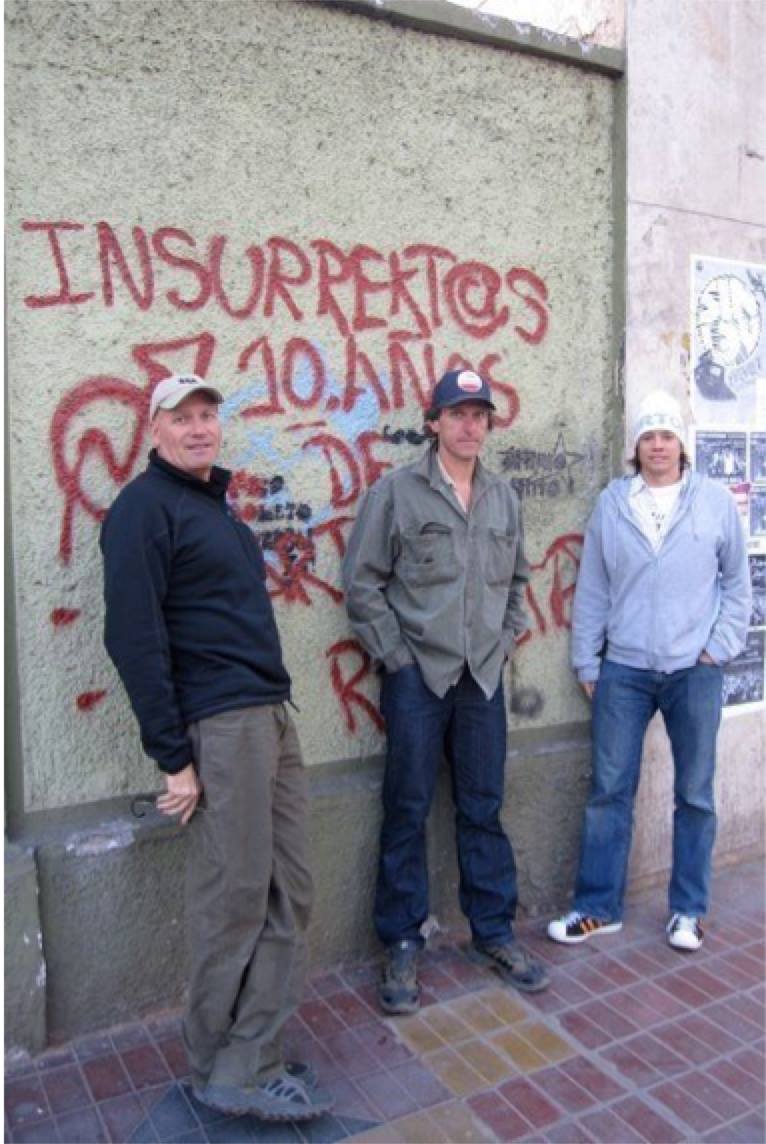
It's taken a movement, I don't think it's just me. There were not many of us who were screaming loudly, typically these early years as the new vintage would come out, I would be dusting off the previous vintage bottles, buying them back, and selling the new cases. What Roger, Joel and I (photo right) did with Three Thieves and those one-liter jugs really struck a nerve in this really fun way; the wines were serious, but approachable, but the packaging was ironic. It challenged everything, but in this lighthearted way. That was probably what most accelerated, gave confidence, we can do anything, we can do this. I would say if there was a single thing that changed my trajectory and built confidence and allowed all these other business development, I'd put it on the original jug of Zinfandel, as weird as that sounds.
You look like a very laid back guy but you sell more rosé than anyone else in the country.
It's quite a lot. Charles and Charles rosé is the number one selling American made rosé, about $10. I only say about $10 because below $10 tends to get into the sweet stuff, and if you look at Nielsens they don't distinguish. The Bieler Pere et Fils rosé has been incredibly successful, under $15, it's the number one Provence selling rosé. There is one brand, Whispering Angel, which has invested enormously in luxury events. The wines are solid, I respect them for that, and I really respect how they've gone out to really build a high priced, high prestige brand. I hear that they're producing over 150,000 cases this year. I haven't audited them, I don't know. But they would be more than me. Combined, I'm over 100,000 cases.
I have great partners. Any success that I've had has been always in part to really great partners. Whether it's in the winery or whether it's in the collaboration or selling, what have you. It's all well and good to have ideas of how you want to do things, but to have to be able to work from Washington to France to California, I've only been able to do that through just incredibly talented group of people who have inspired me, I've learned a ton from, I've just been a sponge to. Certainly Charles Smith is one of them.
It started off originally that, I wanted to show the world that America can make properly balanced rosé, just pure, focused, beautiful. I felt the Clement Valley had the right terroir and the right cost of fruit to be able to do it at a price that anybody could pick up and have with their leftovers on a Tuesday night, and not a special occasion kind of wine. In the mid 2000s there were some nice rosés being made by Ted Lemon, Littorai and some others - Sinsky, they're lovely but they cost $20, $30 bucks and to me that wasn't the point.
Anyway, Charles was a friend and I didn't know enough about Washington to know how to approach it and he agreed to join me on this endeavor. Really talented guy.
We talked about the marketing, but I think that's only half of what makes you successful. The other is that you've been able to make spectacular wines at the price points at which you're selling them. The Charles and Charles Cabernet Syrah blend for $11.99 is an incredible wine. The Bieler rosé at the $12 price is also an incredible wine. How are you able to make these wines at the price point at which you're selling them?
I'd start with this. We put the marketing in the wine. I would say our cost of goods on the Bieler rosé are within 5%, other than maybe the glass cost, within 5% of Whispering Angel. They invest hugely in prestige events and et cetera, and we focus on putting the bottle and let the consumer decide.
When I started in this business there was a gentlemen that was running Bonny Doon at the time, Ted Pearson is his name. I knew nothing, I was being a sponge. Hey how do you do a margin? I knew nothing, and we were talking about pricing with the Routas at the time, and he said, don't fool yourself. When you think about pricing, of course everybody wants the higher price, and the idea of this higher margin. But at the end of the day, how much support do you have to give to it to be able to reach that price? Decide how you want to spend your time. Do you want to go really sharp and let the consumer decide, wow this is an incredible value? Or do you want to go push the high price and maybe get lucky, and that happens anyway, but probably not. Particularly if it's something you want to grow, if you want to spend your time promoting and fine tuning within an advertising, marketing, selling endeavor, go that route. Your choice, neither is right or wrong, it's just different ways to go.
That was very influential for me, from the start, I said I want that option. There's so much great wine being made, and I'm turned on by value. Something that cost $100, it better be fucking delicious. There's nothing more exciting than thinking that you get more than you paid for. If you paid $10, and you're like, wow I would have paid $15-$20 for this, that is such a win. It's exciting for retailers, or restaurants to pass along this giving back more than they're having to hand you. I love that. A lot of people think I'm crazy, at this point in the industry. I've been doing this since '99, and I would imagine most people who spent that much time in the industry find themselves creeping up in price points, wanting to produce higher and higher prestige. That doesn't interest me particularly. I love this zone.
I should also say that 85% of all wine in America sells for under $15 bucks. It's also a big pool to play in. All these things just keep me focused on that. From the outset, when I talked about Washington, why Washington originally for the rosé, well terroir, but there was interesting terroir that could produce the kind of rosé that I wanted in the Santa Rita hills, and in Sonoma Coast, and in parts of Mendocino. But you know what? That fruit costs twice as much, and I wasn't willing to do whatever price just to hit that style. That all goes into the creation of everything from the beginning.
You have all these different partnerships with other winemakers ...
Four.
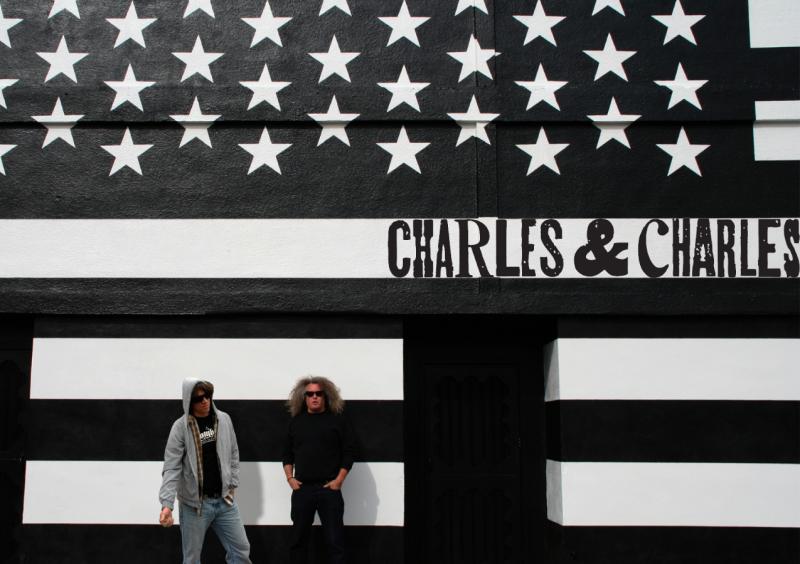
Four partnerships. Talk about Charles Smith. Is it fair to describe him as a colorful character?
Yeah. He's a colorful guy, absolutely. You know, he's publicly very colorful. When it's just me and him, he's quite calm and thoughtful and I picture him the opposite of how other people do, and it's sipping some tea, and petting his cat, and wrestling with his daughter. As opposed to the guy shouting and guzzling bottles of wine, which he also does. He loves to have a great time, he knows that it's important to be remembered. He's got a great story.
He was a rock promoter.
He was, he managed bands in Europe and he came back with a few thousand bucks in his pocket, found himself in Walla Walla, and was taken under the wing of Christophe Baron of Cayuse Vineyards. Christophe taught him how to do his first fermentation and he had a real knack for it. He was already a great wine lover, worked in restaurants always, and had accumulated an incredible knowledge, and like a lot of wine people had this photographic memory. He takes information and absorbs it.
He's a hugely talented guy, but one of the reasons why Charles Smith K brand wine is as exciting as it is, particularly relative to what's happening in Washington, and that's changing a bit, because Washington I think is broadly upping it's game, but Charles never was trying to make just the best wine in Washington or the best wine in America. His target was, when he drinks Syrah it's generally from Northern Rhône. That's what he's going after. We always answer to this different tier.
He immediately had incredible results with his K brand and he also is a great marketer. I think he produces only what is interesting to him, he probably can't market something for a concept that doesn't connect with him. He's an incredible promoter. He's a little bit controversial, there are a lot of people that don't love him. I think a lot of people are just jealous, he's had a lot of success.
He's also great at drawing the culture, what surrounds him, what he's able to draw in in terms of talent is amazing. He's uncompromising, which is difficult at times, but the results are extraordinary across the board. There are very few producers in the world that can get the 100 point wines and 100 point scores and also produce 250,000 cases of $11 Riesling. He's a great friend, I've learned a ton. Hopefully he's learned something from me.

It's been a really exciting project, starting with rosé, continuing with this Cab Syrah blend, which to do the 2015 vintage, we produced 100,000 cases of this wine. But it's all native yeast, the Syrah was all on stems, these are up to 40-45 day long on the skins from when the fruit comes in until we press it off. For a wine of that kind of volume, that's unheard of. Generally you try to turn tanks as many times as you can during a harvest. If you can do slower, longer extractions you can general yield more interesting flavor development and more texture and all sorts of benefits. It's a very serious wine that costs very little.
I think Washington is also always under the shadow of California. California is the big one, 75% or so of the total US production is from there. Washington is like Avis, they're in second, they have to try harder. Have to deliver more, and jump up and down more. I think we're doing that thanks to great material and certainly Charles' amazing talents in the winery, and the team. It's not just Charles, it's Brennon Leighton, who's an incredibly talented winemaker, who's the winemaker, generally the production maker, day to day. Michelle is a real driving force anyway.














